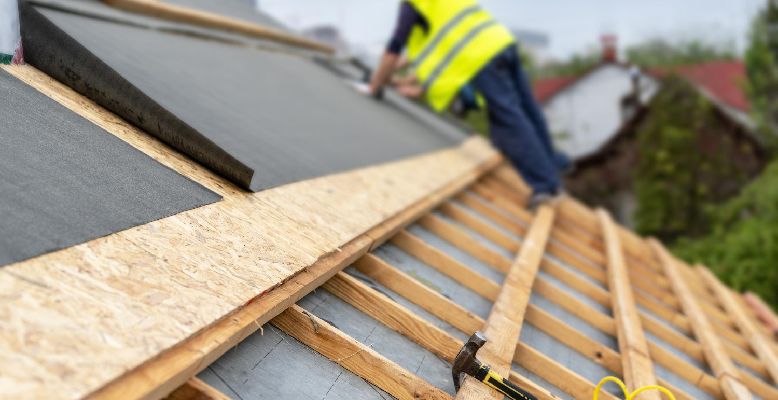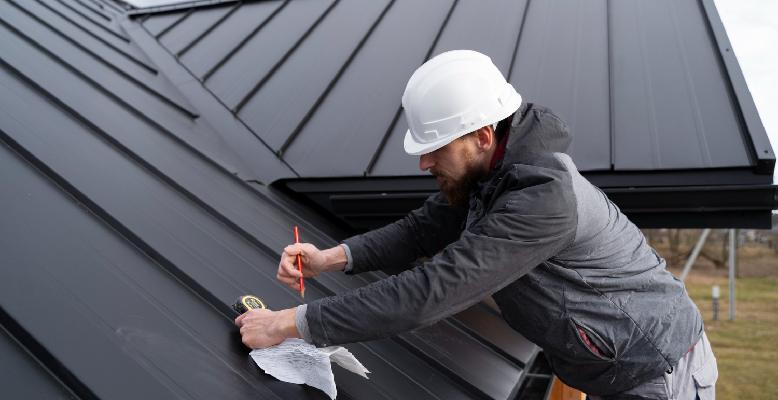When it comes to safeguarding your home, the roof over your head often takes center stage—but how much attention are you really giving it? Many homeowners adopt a routine of occasional inspections, but what if there’s more to uncover beneath those shingles? Whether you’re preparing for seasonal changes or just want to extend the life of your roofing system, diving deeper into inspection strategies can reveal hidden issues and save you money in the long run.
Join us as we explore six innovative roof inspections strategies that will elevate your maintenance game—guaranteeing not only peace of mind but also ensuring that your rooftop remains a sturdy shield against nature’s whims! Read on and discover new ways to protect one of your most vital investments.
Introduction to the Importance of Roof Inspections
When it comes to home maintenance, the roof often gets overlooked. Yet, it’s your first line of defense against weather elements and environmental threats. Regular roof inspections should be a top priority for homeowners looking to protect their investment and ensure safety. While many people stick to traditional strategies like visual checks or climbing onto their roofs, there are innovative methods available that can provide deeper insights into your roof’s condition. If you’re curious about how these unconventional approaches can save you time and money in the long run, keep reading!

Traditional Strategies for Roof Inspections
When it comes to roof inspections, traditional strategies are the go-to method for many homeowners. A visual inspection is often the first step. Inspectors look for obvious signs of damage, such as missing shingles or cracks. Walking on the roof offers a closer examination. This hands-on approach allows inspectors to feel for soft spots and check drainage systems directly. However, this method can be risky and may not always be feasible.
Using drones has recently gained popularity in the roofing industry. Drones provide aerial views that reveal problems otherwise difficult to spot from the ground. They capture high-resolution images without putting anyone at risk. These conventional techniques serve their purpose well but can sometimes miss hidden issues lurking beneath surfaces or in hard-to-reach areas.
Visual Inspection
Visual inspection is the cornerstone of roof assessment. It provides a preliminary look at your roofing system’s health without any special tools. During this process, inspectors examine shingles for missing pieces or curling edges. They also check flashing and gutters for wear and tear that could lead to leaks. A keen eye can spot discoloration or sagging spots, which are warning signs of underlying issues.
Inspectors often start from the ground, using binoculars to get a close-up view. This method allows them to identify visible damage such as rust staining on metal roofs or cracked tiles on ceramic surfaces. While visual inspections are essential, they may not reveal everything lurking beneath the surface. That’s why combining this strategy with more advanced techniques enhances accuracy in identifying potential problems before they escalate into major repairs.
Walking on the Roof
Walking on the roof can be a straightforward way to assess its condition. It allows for a close-up examination of shingles, flashing, and other critical components. However, this method comes with its own set of risks. Safety gear is essential—helmets and harnesses should never be optional when scaling heights. Additionally, not all roofs are built to bear weight; some may have underlying damage that could worsen underfoot.
If you choose this strategy, pay attention to any signs of wear such as cracked or missing shingles. Look out for sagging areas that might indicate structural issues lurking beneath the surface. While walking offers detailed insights into your roofing system’s state, it’s crucial to weigh the benefits against potential hazards involved in the process. Always consider enlisting professional help if you’re unsure about navigating your rooftop safely.
Using a Drone
Drones have revolutionized roof inspections in recent years. They provide a unique aerial perspective that traditional methods simply cannot match. With high-resolution cameras, drones capture detailed images of the roof’s surface. This allows inspectors to identify issues like missing shingles or cracks without putting anyone at risk.
What’s more, drones can cover extensive areas quickly. This efficiency is especially beneficial for larger properties where accessing certain sections may be challenging or unsafe. The ability to fly at various heights means inspectors can examine hard-to-reach spots with ease. It saves time and enhances safety for everyone involved.
Using a drone also creates an opportunity for stunning visuals. Homeowners receive comprehensive reports filled with clear imagery, making it easier to understand any problems that need addressing.
Unconventional Strategies for Roof Inspections
When it comes to roof inspections, thinking outside the box can yield surprising results. One unconventional strategy gaining traction is thermal imaging technology. This method detects heat loss, allowing inspectors to identify hidden leaks and insulation issues without stepping foot on the roof.
Aerial surveys are another innovative approach. By capturing high-resolution images from above, professionals can assess a roof’s condition more comprehensively than traditional methods permit. Utilizing drones equipped with infrared cameras takes this further. Not only do these drones provide stunning visuals from unique angles, but they also pinpoint potential problems like water intrusion or structural weaknesses that might otherwise go unnoticed.
These techniques can save time and reduce risks associated with climbing ladders or walking on potentially unsafe roofs. Embracing new technologies opens doors for more thorough inspections and ultimately protects your investment in your home’s structure.

Thermal Imaging Technology
Thermal imaging technology is revolutionizing roof inspections. Instead of just relying on visual signs of wear, this method detects temperature variations across the surface. Hotspots can indicate underlying issues such as moisture accumulation or inadequate insulation. By identifying these areas early, homeowners can address potential problems before they escalate into costly repairs.
This non-invasive approach provides a comprehensive view of your roof’s health without needing to climb up and risk damage. Moreover, thermal cameras deliver data in real time, allowing for immediate analysis and reporting by professionals.
Using this technology not only enhances safety but also increases accuracy in detecting hidden defects that traditional methods might miss. It’s an innovative way to ensure your roof remains resilient against the elements while saving money in the long run.
Aerial Surveys
Aerial surveys are revolutionizing the way roof inspections are conducted. By utilizing advanced technology, these surveys provide a comprehensive overview of your roof’s condition from above. High-resolution images captured by drones give inspectors an unparalleled view of potential problem areas. This method can identify issues that might be missed during traditional inspections, such as hidden leaks or structural damage.
Not only do aerial surveys save time, but they also enhance safety. Inspectors can avoid climbing hazards while still obtaining detailed assessments. This approach offers valuable data for homeowners and contractors alike, allowing for informed decisions about maintenance and repairs. As more roofing professionals adopt this technique, it is quickly becoming a preferred choice in the industry.
Utilizing Drones with Infrared Cameras
Utilizing drones equipped with infrared cameras is a game changer in roof inspections. This technology allows for a non-invasive examination of your roofing system, revealing potential issues that the naked eye might miss. Infrared cameras detect heat variations, which can indicate underlying problems such as leaks or insulation defects. Drones capture vast areas quickly and efficiently, making them ideal for large commercial roofs or intricate residential designs.
This method minimizes risk because inspectors don’t have to navigate hazardous heights or uneven surfaces on foot. Instead, they can maneuver the drone from a safe distance while gathering critical data about the roof’s condition.
Beyond detecting immediate concerns, this technology provides invaluable insights into long-term maintenance needs. Homeowners gain comprehensive reports that help in planning future repairs or upgrades effectively.
The Benefits of Utilizing These Unconventional Strategies
Utilizing unconventional strategies for roof inspections can significantly enhance the accuracy of assessments. Thermal imaging technology, for instance, identifies hidden leaks and insulation gaps that may go unnoticed during a standard visual inspection.
Aerial surveys provide an expansive view of your roofing system. This method allows inspectors to detect issues like wear and tear from a safe distance, reducing risks associated with climbing onto the roof. Incorporating drones equipped with infrared cameras elevates this process even further. These devices capture high-resolution images, pinpointing problem areas without disturbing your landscape or putting anyone at risk.
By adopting these innovative techniques, homeowners gain peace of mind knowing their roofs are thoroughly evaluated. Investing in advanced inspection methods helps prevent future costly repairs by addressing potential problems before they escalate into major concerns.
Taking Advantage of New Technology in the Industry
The roofing industry is evolving rapidly, driven by technological innovation. From smart sensors to advanced imaging techniques, new tools are reshaping how we conduct roof inspections. Many contractors now leverage artificial intelligence and machine learning for predictive maintenance. These technologies analyze historical data to forecast potential issues before they escalate.
Additionally, software platforms help streamline the inspection process. They provide real-time reporting and enhance communication between homeowners and contractors. Mobile applications also play a role in modern inspections. Homeowners can document their roofs’ conditions with photos taken directly from their smartphones.
By embracing these advancements, professionals like Perfect Contractor Group can improve accuracy while reducing time spent on each job. This leads to better decision-making and increased customer satisfaction—all critical factors in today’s competitive market.

Why Every Homeowner Should Consider These Strategies for Their Next Inspection
Roof inspections are essential for maintaining the integrity of your home. Traditional methods like visual checks and walking on the roof provide valuable insights, but they can have limitations. By embracing innovative techniques such as thermal imaging technology and aerial surveys, you’re gaining a thorough understanding of your roof’s condition.
These unconventional strategies not only enhance the accuracy of inspections but also save time and reduce safety risks associated with climbing roofs. Real-life success stories from Perfect Contractor Group illustrate how these advanced methods lead to quicker problem identification and resolution, ultimately saving homeowners money in repair costs.
As technology continues to evolve, so should our approach to roof inspection. Homeowners can benefit immensely by adopting cutting-edge tools that offer detailed analysis without compromising safety or efficiency. Staying proactive about Roof Repair Yonkers, NY will ensure long-term protection for one of your most significant investments—the place you call home. Consider incorporating these strategies into your next inspection process, because when it comes to safeguarding your property, every detail matters.





